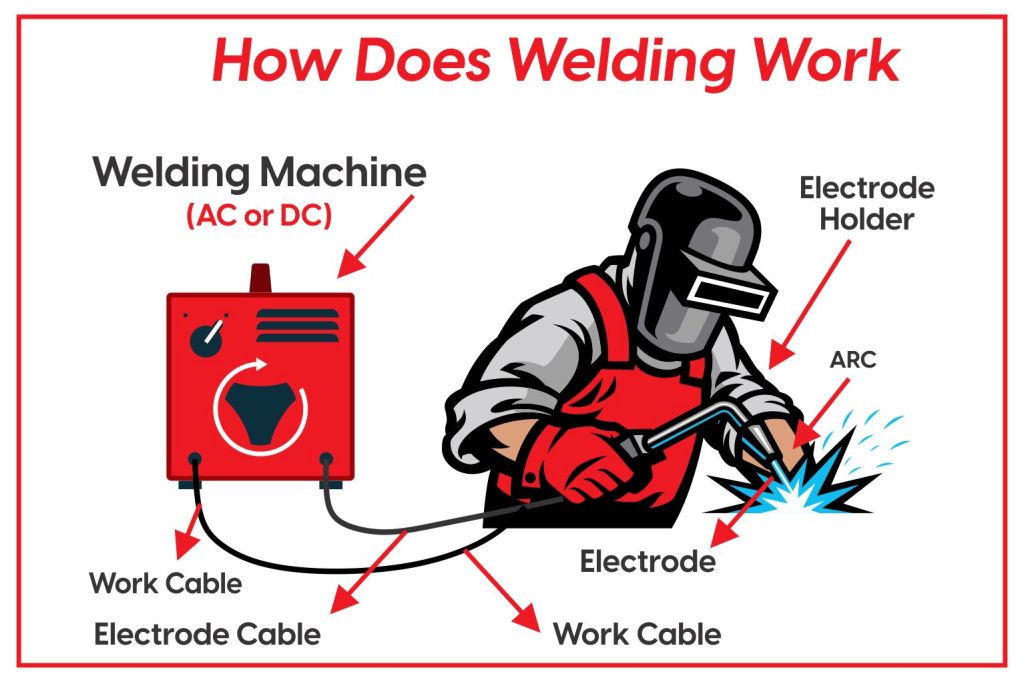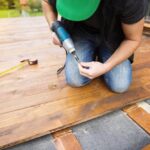In this article, we will be discussing how welding works. Welding is basically a fusion process in which 2 or more metals and also thermoplastic components are melded together using high heat or pressure or in some cases both. It is used to combine work pieces in order to produce a complex structure.
In the welding process, we usually combine parts by melting a filler material near the joint. This combination is achieved using 3 techniques: laser welding, arc welding and gas welding. Let’s take a look at this process and its details.
If you are looking for Best TIG Welder AHP Alpha TIG 200x is best for you.
Purpose:
Welding is utilized in various modern constructions including but not limited to cars, skyscrapers, airplanes and even ships. In the past, people used to use processes like soldering and brazing for these tasks. However, welding being the more durable option, has become more common for manufacturing and industrial applications.
Basics of welding:
Welding should not be confused with brazing or soldering. In soldering, you burn a filler material between two components in order to join them. In this case, the filler material only burns to form a bond between the two parts. In case of welding, you are also burning the metals being joint so that they melt and then combine with the filler in order to form a firmer bond.
Types of welding:
Welding can be divided into three different techniques:
1. Gas Welding:
Also commonly known as oxy-fuel welding, gas welding is an older and therefore, common option. In this, gas is first funneled towards a welding stick (point of focus), and then it is ignited in order to create a flame. It is more suitable for high-alloy steels. The weld point may not be concentrated enough but being hotter, its better for tough alloys.
2. Arc welding:
This uses an electric arc for melting the work piece. First you attach a grounding wire to the material. After that you have to place an electrode against the work piece. Then you have to pull the electrode along the work piece to create an arc. This helps produce a concentrated weld point. There are 3 further types of arc welding:
- Stick welding:
In this method you deliver an electrode towards the welding point. Here, the arc is melting in order to join the metals. High temperature at the tip of the electrode on the welding gun leads to the production of an arc which is used for joining the materials.

- MIG welding:
Metal Inert Gas welding involves the passing of a continuous electrode through a welding gun which heats up to join the metals together. An arc is created between the gun and the base material until the melting point is reached. A puddle of molten pieces helps in joining the metals.
- TIG welding:
In Tungsten Inert Gas welding, you use a non-consumable tungsten electrode to heat and then melt the base metal. The electrode arc causes the metals to join.
3. Laser Welding:
This is the most recent innovation in welding technology. Currently, it is only used for large industrial applications. In this method, high-energy beams are used to fuse the metals together. Its expansive and requires expert control.
Elements of welding:
Let us now describe the elements of welding and explain exactly what they do.
1. Arc:
Arc is basically in the form of plasma which is a state of matter. It is created by the current moving through the metal you’re working on from the ground of the welder to the electrode. The electrode is basically a conductor which helps complete the circuit. This allows the welder to create the arc. It is produced when a gas breaks down and discharges plasma. Gases such as helium, carbon dioxide and argon have higher ionization and conductivity which makes it easier to produce and maintain the arc. This makes them suitable for being the shielding gas.
2. Filler metal:
This is a wire or rod of metal which is fed directly into the puddle which forms near the point where the base metal is making contact with the arc. For filling the weld zone, creating the bead and feeding the puddle, it adds more material. The filler metal is usually similar to the work piece metal but in some cases, it can be different too.
3. Flux:
It helps in keeping the contaminants out of the welding zone and also in stabilizing the arc. It can be produced from a variation of compounds which mainly depends on the material and application.

4. Shielding gas:
This is an inert gas which is an alternate for chemical flux. It has better control over the arc as compared to flux. It is also much cleaner.
5. Ground:
It helps in completing the circuit. It can be clamped to either the work piece or to conductive metal table on which the work piece rests. Without ground, there will be no arc.
6. Spatter:
This is tiny molten metal balls which are ejected during the welding process. They can also fuse themselves to the gun’s nozzle or to the work piece. You can prevent this by using spray spatter protection.
Benefits:
These are some of the benefits of welding over other joining methods:
- Flawless seam
- Durable bond
- Efficient and versatile system
- Superior melting
Final verdict:
Welding is complex but if learnt and practiced, it provides a lot of convenience and durability. We hope this guide gave you an idea about the basics of welding and how it works. Good luck!






